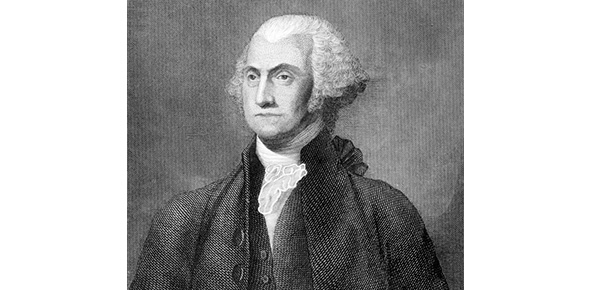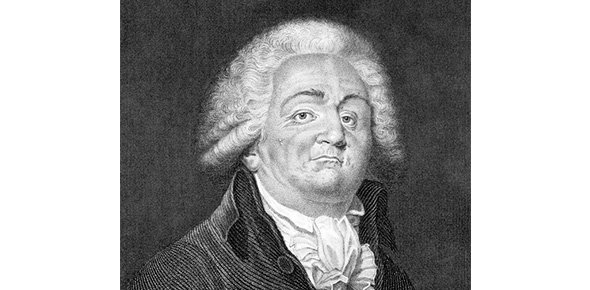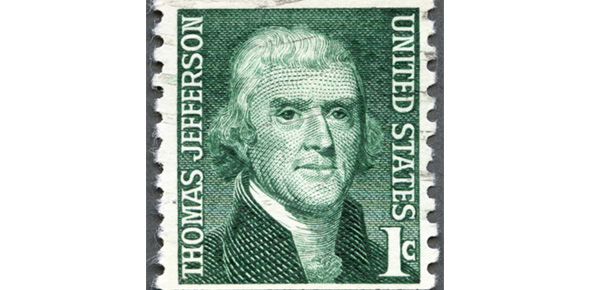Related Flashcards
Related Topics
Cards In This Set
| Front | Back |
|
Market Revolution
|
Following the War of 1812, the American economy was altered from an economy partly dependent on imports from Europe to an economy that evolved into an empire of internal commerce. In 1817 James Monroe replaced James Madison as president of the U.S. The Republicans continued policies begun in Jefferson’s administration. With a new generation of leaders the Republican Party came to embrace the principles of government activism and the development of large-scale domestic manufacturing. Despite all of the promises that characterized the United States, discrepancies loomed: the survival of slavery, treatment of the Indians, the deterioration of some urban areas, and a mania for speculation. The nation was not just growing through the addition of land, but population shifts brought about new states to the Union and when Missouri petitioned for statehood in 1819, the issue of slavery was thrust on the national agenda. Thomas Jefferson wrote that the issue awakened him "like a firebell in the night." That the Missouri question coincided with the nation’s worst financial crisis awakened anxieties in many Americans. By the 1820’s Americans recognized a rough regional specialization: plantation-style export agriculture in the south, a north built on business and trade, and a frontier west. The regions were interdependent but in time their differences would become more obvious, more important, and increasingly more incompatible.
|
|
Industrial Revolution
|
The main features involved in the Industrial Revolution were technological, socioeconomic, and cultural. The technological changes included the following: (1) the use of new basic materials, chiefly iron and steel, (2) the use of new energy sources, including both fuels and motive power, such as coal, the steam engine, electricity, petroleum, and the internal-combustion engine, (3) the invention of new machines, such as the spinning jenny and the power loom that permitted increased production with a smaller expenditure of human energy, (4) a new organization of work known as the factory system, which entailed increased division of labour and specialization of function, (5) important developments in transportation and communication, including the steam locomotive, steamship, automobile, airplane, telegraph, and radio, and (6) the increasing application of science to industry. These technological changes made possible a tremendously increased use of natural resources and the mass production of manufactured goods.
There were also many new developments in nonindustrial spheres, including the following: (1) agricultural improvements that made possible the provision of food for a larger nonagricultural population, (2) economic changes that resulted in a wider distribution of wealth, the decline of land as a source of wealth in the face of rising industrial production, and increased international trade, (3) political changes reflecting the shift in economic power, as well as new state policies corresponding to the needs of an industrialized society, (4) sweeping social changes, including the growth of cities, the development of working-class movements, and the emergence of new patterns of authority, and (5) cultural transformations of a broad order. The worker acquired new and distinctive skills, and his relation to his task shifted; instead of being a craftsman working with hand tools, he became a machine operator, subject to factory discipline. Finally, there was a psychological change: man’s confidence in his ability to use resources and to master nature
|
|
Urbanization
|
The technological explosion that was the Industrial Revolution led to a momentous increase in the process of urbanization. Larger populations in small areas meant that the new factories could draw on a big pool of workers and that the larger labour force could be ever more specialized. By the 19th century there were thousands of industrial workers in Europe, many of them living in the most miserable conditions. Attracted by the promise of paid work, immigrants from rural areas flooded into cities, only to find that they were forced to live in crowded, polluted slums awash with refuse, disease, and rodents. Designed for commerce, the streets of the newer cities were often arranged in grid patterns that took little account of human needs, such as privacy and recreation, but did allow these cities to expand indefinitely.
|
|
Immigrants
|
In the late 1800s, people in many parts of the world decided to leave their homes and immigrate to the United States. Fleeing crop failure, land and job shortages, rising taxes, and famine, many came to the U. S. because it was perceived as the land of economic opportunity. Others came seeking personal freedom or relief from political and religious persecution. With hope for a brighter future, nearly 12 million immigrants arrived in the United States between 1870 and 1900. During the 1870s and 1880s, the vast majority of these people were from Germany, Ireland, and England--the principal sources of immigration before the Civil War. That would change drastically in the next three decades.
Immigrants entered the United States through several ports. Those from Europe generally came through East Coast facilities, while those from Asia generally entered through West Coast centers. More than 70 percent of all immigrants, however, entered through New York City, which came to be known as the "Golden Door." Throughout the late 1800s, most immigrants arriving in New York entered at the Castle Garden depot near the tip of Manhattan. In 1892, the federal government opened a new immigration processing center on Ellis Island in New York harbor. |
|
Nativism
|
Favors the interests of certain established inhabitants of an area or nation as compared to claims of newcomers or immigrants. It may also include the re-establishment or perpetuation of such individuals or their culture.
This may result in an opposition to immigration or to specific ethnic or cultural groups because the groups are considered hostile or alien to the natural culture, and it is assumed that they cannot be assimilated. Opposition to immigration is common in many countries because of issues of national, cultural or religious identity. The phenomenon has been studied especially in Australia, Canada, New Zealand and the United States, as well as Europe in recent years. Thus nativism has become a general term for 'opposition to immigration' based on fears that the immigrants will distort or spoil supposedly national values.
|
|
Know-Nothing Party
|
U.S. political party that flourished in the 1850s. The Know-Nothing party was an outgrowth of the strong anti-immigrant and especially anti-Roman Catholic sentiment that started to manifest itself during the 1840s. Members, when asked about their nativist organizations, were supposed to reply that they knew nothing, hence the name. As its membership and importance grew in the 1850s, the group slowly shed its clandestine character and took the official name American Party. As a national political entity, it called for restrictions on immigration, the exclusion of the foreign-born from voting or holding public office in the United States, and for a 21-year residency requirement for citizenship.
|
|
Steamboats
|
Any watercraft propelled by steam, but more narrowly, a shallow-draft paddle wheel steamboat widely used on rivers in the 19th century, and particularly on the Mississippi River and its principal tributaries in the United States.The two men began in 1812 the operation of a regular steamboat service between New Orleans and Natchez, Miss., under a monopoly contract with the territory of Orleans. In 1816 Henry Miller Shreve of Shreveport, La., made history by launching his steamboat Washington; Shreve broke the Fulton-Livingston monopoly of steam navigation on the river, but his title as the father of Mississippi navigation stems more from his adaptations of steamboat design to fit the shallow waters of the river; he used a high-pressure steam engine (to make progress upstream), hoisted it high up above the water line, and mounted it on a hull that was as shallow as that of a barge. A tall second deck was added, and Shreve’s experiment became the prototype of all subsequent Mississippi steamboats.
|
|
Turnpikes
|
toll road (or tollway, turnpike, pike, or toll highway) is a privately or publicly built road for which a driver pays a toll (a fee) for use. Structures for which tolls are charged include toll bridges and toll tunnels. Non-toll roads are financed using other sources of revenue, most typically fuel tax or general tax funds. The building or facility in which a toll is collected may be called a toll booth, toll plaza, toll station, or toll gate. This building is usually found on either side of a bridge and at exits.
|
|
Erie Canal
|
It stretches from Buffalo, N.Y., on Lake Erie to Albany, N.Y., on the Hudson River. Commissioned by Gov. DeWitt Clinton of New York, it opened in 1825. It connected the Great Lakes with New York City and contributed greatly to the settlement of the Midwest, allowing for the transport of people and supplies. Enlarged several times, the canal is 363 mi (584 km) long, 150 ft (46 m) wide, and 12 ft (3.6 m) deep. Now used mainly for pleasure boating, it is part of the New York State Canal System.
Meanwhile, a new canal project had been gaining momentum. In particular, DeWitt Clinton had promoted the idea of a western canal as early as 1811 while serving in the New York state senate. He won preliminary legislative approval in 1816 and was named commissioner for the project. In 1817, following election as governor of New York, Clinton persuaded the state legislature to authorize loans for $7 million to build a canal from Buffalo, on the eastern shore of Lake Erie, to the upper Hudson, passing through the Mohawk Valley region.
|
|
DeWitt Clinton
|
American political leader who promulgated the idea of the Erie Canal, which connects the Hudson River to the Great Lakes. 1811 Clinton introduced a bill into the New York Senate to appoint a commission to explore suggested routes for a canal across New York state to link the Northeast coastal trade with the Great Lakes via Lake Erie. He and Gouverneur Morris, chairman of the commission, were sent to Washington, D.C., to seek federal aid for the project but were unsuccessful. After the War of 1812 ended (1814), the canal idea was revived, and Clinton went to the state capital at Albany, urging acceptance of a detailed canal plan. After much persuasion, the legislature agreed to finance the canal as a state project (April 1816) and appointed Clinton to the commission. (1769)-(1828)
|
|
Railroads
|
Mode of land transportation in which flange-wheeled vehicles move over two parallel steel rails or tracks, drawn by a locomotive or propelled by self-contained motors.With the advent of the steam locomotive and construction of the first railway in 1825, the modern railroad developed quickly. Construction was begun on the first U.S. railroad, the Baltimore and Ohio, in 1828. Specialized railroad cars were built to transport freight and passengers, including the sleeping cars developed by George Pullman in 1859. In
|
|
Telegraph
|
Any device or system that allows the transmission of information by coded signal over distance.1832 Samuel F.B. Morse, a professor of painting and sculpture at the University of the City of New York (later New York University), became interested in the possibility of electric telegraphy and made sketches of ideas for such a system. In 1835 he devised a system of dots and dashes to represent letters and numbers. In 1837 he was granted a patent on an electromagnetic telegraph. Morse’s original transmitter incorporated a device called a portarule, which employed molded type with built-in dots and dashes. The type could be moved through a mechanism in such a manner that the dots and dashes would make and break the contact between the battery and the wire to the receiver. The receiver, or register, embossed the dots and dashes on an unwinding strip of paper that passed under a stylus. The stylus was actuated by an electromagnet turned on and off by the signals from the transmitter.
|
|
Samuel F.B. Morse
|
American painter and inventor who, independent of similar efforts in Europe, developed an electric telegraph (1832–35). In 1838 he developed the Morse Code.
With the aid of his new partners, Morse applied for a patent for his new telegraph in 1837, which he described as including a dot and dash code to represent numbers, a dictionary to turn the numbers into words and a set of sawtooth type for sending signals. Morse, discouraged with his art career, was giving nearly all his time to the telegraph. By 1838, at an exhibition of his telegraph in New York, Morse transmitted ten words per minute. He had dispensed with his number-word dictionary, using instead the dot-dash code directly for letters. Though changes in detail were to be made later, the Morse code that was to become standard throughout the world had essentially come into being. During the next few years Morse exhibited his telegraph before savants, businessmen and committees of Congress, hoping to find the funds to give his telegraph a large-scale test. He met considerable skepticism that any message could really be sent from city to city over wire.
|
|
Associated Press
|
AP), cooperative news agency (wire service), the oldest and largest of those in the United States and long the largest and one of the preeminent news agencies in the world. Its beginnings trace to 1848, when six New York City daily newspapers pooled their efforts to finance a telegraphic relay of foreign news brought by ships to Boston, the first U.S. port of call for westbound transatlantic ships.
|
|
Horace Greeley
|
American newspaper editor who is known especially for his vigorous articulation of the North’s antislavery sentiments during the 1850s.
In April 1841, Greeley set himself on the path to national prominence and power when he launched the New York Tribune. The Tribune was multifaceted, devoting space to politics, social reform, literary and intellectual endeavors, and news. It was very much Greeley's personal vehicle. An egalitarian and idealist, Greeley espoused a variety of causes. He popularized the communitarian ideas of Fourier, and invested in a Fourier utopian community at Red Bank, New Jersey. He advocated the homestead principle of distributing free government land to settlers, attacked the exploitation of wage labor, denounced monopolies, and opposed capital punishment.
|






